Have you ever watched a Japanese chef work their magic in the kitchen and wondered how their knife slices through food like butter? Well, folks, today we’re diving into the world of Japanese chef knives, which are as sharp as their wielders’ wit!
So grab your cutting board and sharpen your appetite for knowledge, because we’re about to serve up a heaping helping of Japanese chef knife wisdom!
Why Are Japanese Kitchen Knives So Good?
History Of Japanese Knives
The excellence of Japanese kitchen knives can be traced back to their rich history. With roots in traditional Japanese sword-making, these knives have evolved over centuries, taking on the precision and sharpness of the legendary samurai swords. As a result, Japanese knives have become renowned for their quality and performance in the kitchen.
Quality Materials
Japanese chef knives are made from high-quality materials, such as high-carbon stainless steel, which ensures their durability and sharpness. These materials contribute to the blade’s ability to maintain a sharp edge for longer periods of time compared to other types of knives. Additionally, Japanese knives often feature a harder steel, which allows for a thinner and sharper blade.
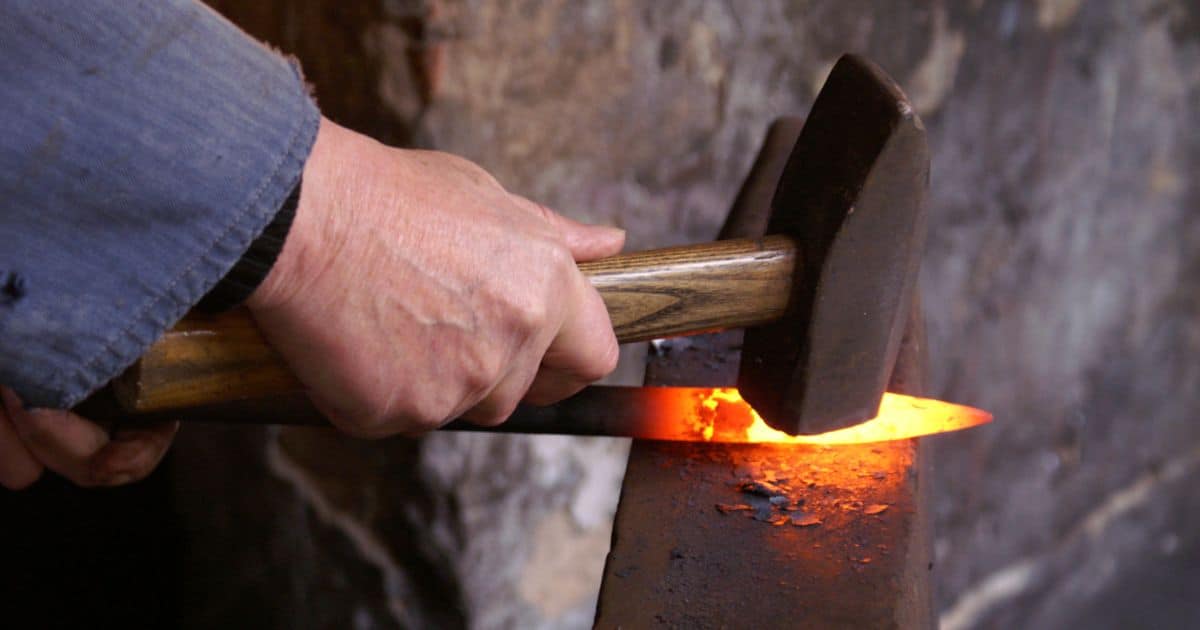
Craftsmanship
Japanese kitchen knives are a testament to the skill and craftsmanship of their makers. Each knife is carefully hand-forged and honed to perfection by highly skilled artisans. This meticulous process results in a blade with an incredibly sharp edge and a comfortable, well-balanced handle. The attention to detail in every aspect of the knife’s construction ensures that it performs at the highest level in the kitchen.
The exceptional performance of Japanese chef knives can be attributed to their rich history, quality materials, and the unparalleled craftsmanship of their makers. These factors come together to create a kitchen tool that is not only efficient but also a pleasure to use.
Are Japanese Knives Worth It?
Investment Vs. Other Knives
When it comes to investing in a quality Japanese knife, many wonder if Japanese chef knives are truly worth the price. Although they can be more expensive than other types of knives, their exceptional quality, great edge retention, and durability justify the investment.
Plus these can be some beautiful knives you will be adding to your collection. Over time, you’ll find that these knives can actually save you money by reducing the need for constant sharpening or replacement of inferior knives.
Longevity
Japanese kitchen knives are built to last. The combination of high-quality materials and expert craftsmanship ensures a knife that can withstand the test of time. With proper care and maintenance, a Japanese chef knife can serve you for many years, even becoming a family heirloom passed down through generations.
Performance
When it comes to performance in the kitchen, Japanese chef knives are unparalleled. Their razor-sharp edges make quick work of any cutting task, from slicing delicate fish for sushi to chopping hearty vegetables for a stew. The precision and control offered by these knives can elevate your cooking skills, allowing you to create restaurant-quality dishes at home with ease.
In summary, Japanese kitchen knives are worth the investment due to their exceptional quality, longevity, and performance. While they may come with a higher price tag, the benefits they bring to your cooking experience far outweigh the initial cost.
What Is The Most Useful Japanese Kitchen Knife?
Comparing Knife Styles
When it comes to choosing the most useful Japanese kitchen knife, it’s essential to consider the various styles and their functions. Some popular Japanese knife styles include the Gyutou (chef’s knife), Honesuki (boning knife), and Nakiri (vegetable knife). Each knife has its unique characteristics and is designed to excel in specific tasks with other Japanese knives having VERY specific uses.
Versatility
In terms of versatility, the Gyutou, or Japanese chef’s knife, is arguably the most useful kitchen knife. With its versatile blade shape and size, it can handle a wide range of tasks, from slicing and dicing to chopping and mincing. The Gyutou’s thin, sharp blade allows for precise cuts, making it perfect for tasks that require accuracy, such as breaking down fish or trimming meat.
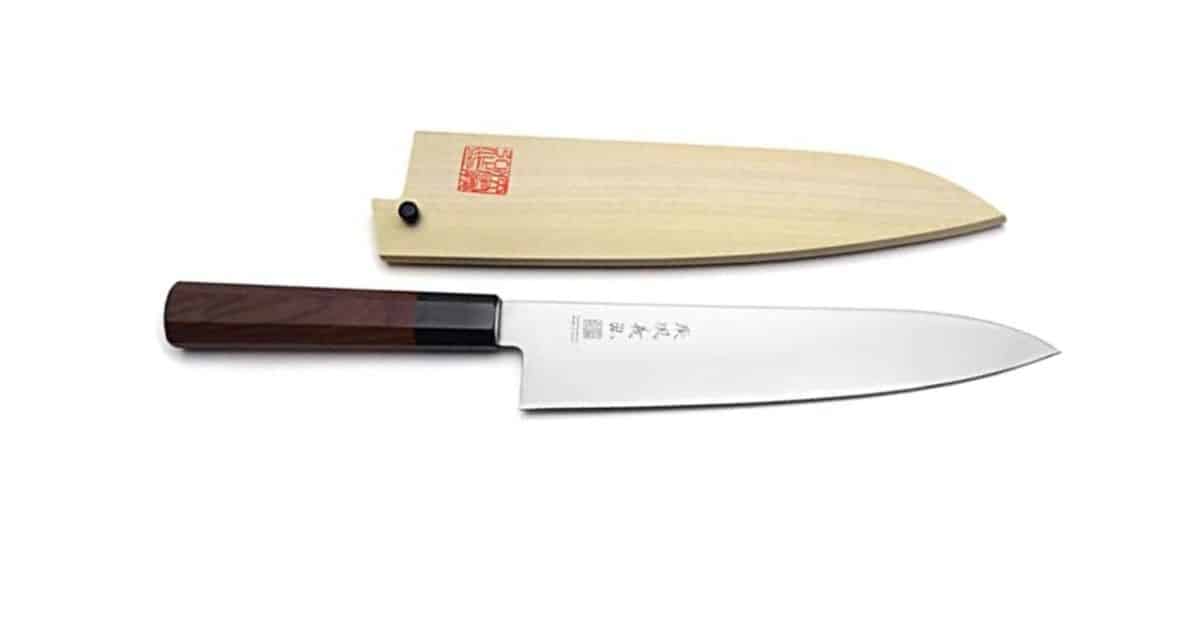
Recommendations
For those looking to invest in a Japanese kitchen knife that offers the most value and usefulness, a high-quality Gyutou is an excellent choice.
Not only does it excel in a variety of tasks, but its performance and durability also make it a reliable workhorse in the kitchen. Some top Gyutou options include brands like Yoshihiro, Shun, and Miyabi, which are known for their exceptional craftsmanship and quality materials.
All in all, I believe the best Japanese knife for first time buyers is the Gyutou. Mainly due to its versatility, precision, and ability to handle a wide range of cutting tasks. Investing in a top-quality Gyutou can significantly improve your cooking experience and make food preparation more enjoyable and efficient.
How Do I Identify A Japanese Chef Knife?
Unique Features
Japanese chef knives boast several distinctive features that set them apart from other types of kitchen knives. Some of these features include a thinner and sharper blade compared to wester style knives. Several blade styles are often ground on one side (single bevel), and a handle that is traditionally made of wood. These characteristics contribute to the knife’s performance, making it easy to identify a genuine Japanese chef knife.
Trademarks
Another way to identify a Japanese chef knife is by looking for trademarks or logos of well-known Japanese knife makers. Brands like Yoshihiro, Shun, and Miyabi are reputable manufacturers that produce high-quality knives. Their logos or markings on the blade or handle can serve as a sign of authenticity.
Tips For Spotting Fakes
Unfortunately, counterfeit Japanese chef knives do exist. To avoid purchasing a fake, keep the following tips in mind:
Buy knives from a reputable retailer or directly from the manufacturer.
Check the price – if it seems too good to be true, it likely is.
Examine the knife’s overall quality and craftsmanship, such as the blade’s sharpness, handle materials, and the fit and finish of the knife.
- When shopping online – do your homework on the brand after you identify the knife you like. There are TONS of cheap knives in the marketplace that are trying to fool you into thinking they are better than they are.
Identifying a genuine Japanese chef knife involves recognizing its unique features, looking for trademarks from reputable manufacturers, and following tips to avoid counterfeit products. By doing so, you can ensure that you’re investing in a high-quality, authentic Japanese kitchen knife that will serve you well in your culinary endeavors.
Understanding the Steel in Japanese Knives: Types and Characteristics
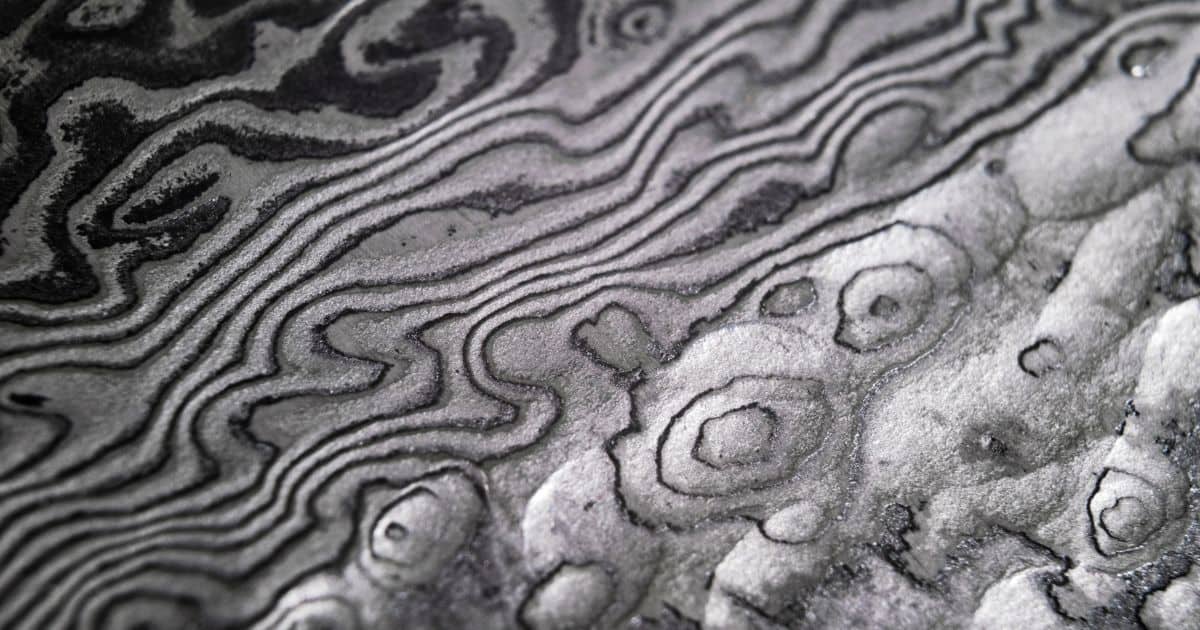
The type of steel used in Japanese knives plays a crucial role in determining their quality, sharpness, and durability. There are various types of steel, each with unique characteristics that make them suitable for different knives and purposes. Here’s a brief overview of the most common types of steel used in Japanese knives:
Carbon Steel
Carbon steel is the traditional choice for many Japanese knives, known for its ability to take a very sharp edge. There are several types of carbon steel, such as Shirogami (White Paper Steel) and Aogami (Blue Paper Steel), named after the color of the paper in which they are wrapped. Carbon steel knives require more care, as they can rust and discolor if not properly maintained.
Stainless Steel
Stainless steel is a popular choice for modern Japanese knives, as it offers excellent corrosion resistance and is relatively low-maintenance. Some common types of stainless steel used in Japanese knives include VG-10, AUS-8, and SG2 (also known as R2 or PM2). Stainless steel knives tend to be slightly less sharp than carbon steel knives but are more user-friendly, especially for beginners.
High-Speed Powdered Steel
High-speed powdered steel, such as ZDP-189, HAP40, or R2, is made using a powder metallurgy process. This process results in a steel with a very fine grain structure, allowing for excellent edge retention and sharpness. Knives made with high-speed powdered steel can be more expensive, but they offer outstanding performance and durability.
Damascus Steel
Damascus steel is not a specific type of steel but rather a method of layering different types of steel to create a distinctive pattern on the blade. Japanese Damascus knives often use high-quality stainless or carbon steel as the core, with multiple layers of softer steel folded around it. The result is a blade with a beautiful pattern and exceptional performance.
Honyaki and Kasumi
Honyaki and Kasumi refer to two different forging methods used in traditional Japanese knife-making. Honyaki knives are made from a single piece of high-carbon steel, while Kasumi knives have a core of high-carbon steel surrounded by a softer iron or steel layer. Honyaki knives are more challenging to produce and maintain, but they offer superior sharpness and edge retention compared to Kasumi knives.
By understanding the types of steel used in a Japanese knife, you can make an informed decision when selecting a knife that suits your needs, preferences, and budget.
Types Of Japanese Knives For Chefs

Gyutou
The Gyutou, or chef’s knife, is a versatile knife perfect for various cutting tasks, such as slicing, dicing, and chopping. Its thin, sharp blade makes it suitable for both meat and vegetables, making it a staple in many kitchens.
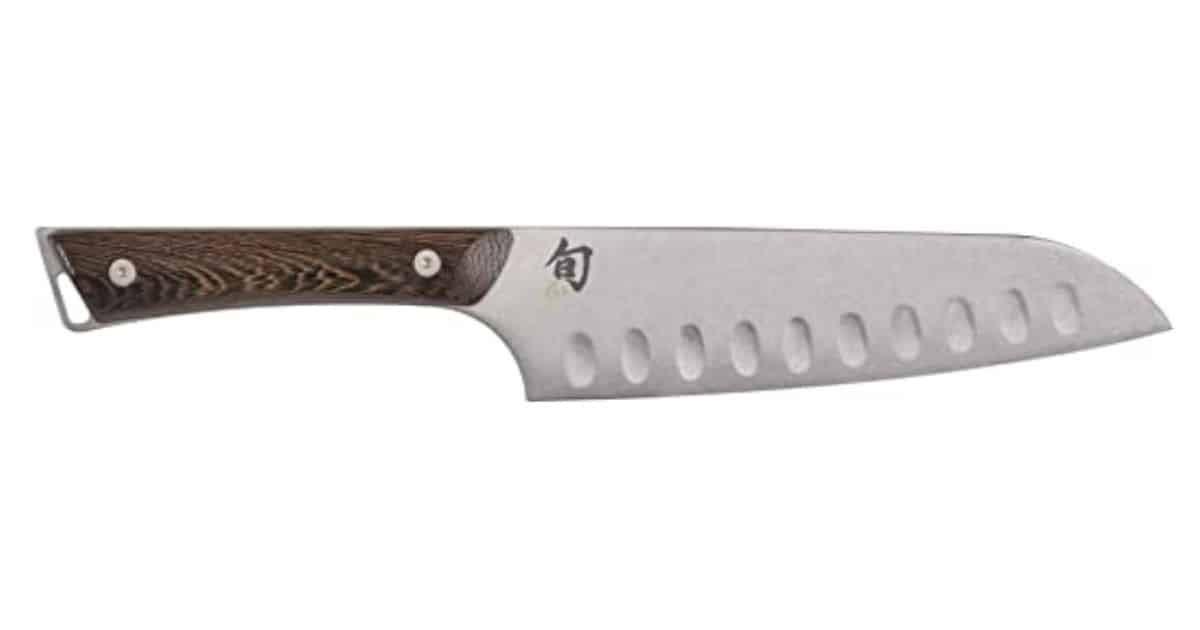
Santoku
The Santoku is another versatile knife with a shorter, wider blade compared to the Gyutou. Its name translates to “three virtues,” representing its ability to slice, dice, and mince. It’s an excellent choice for those with smaller hands or limited kitchen space.
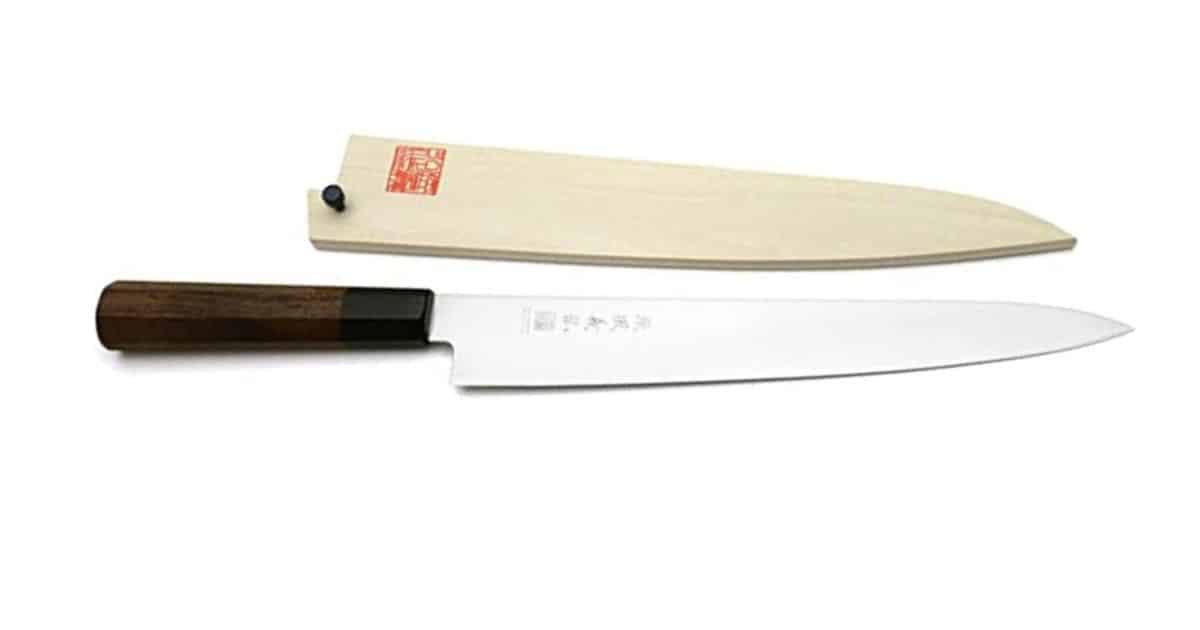
Sujihiki
The Sujihiki is a long, slender knife designed for slicing meat and fish with precision. Its narrow, sharp blade allows for clean cuts with minimal resistance, making it ideal for tasks such as carving roasts or filleting fish.
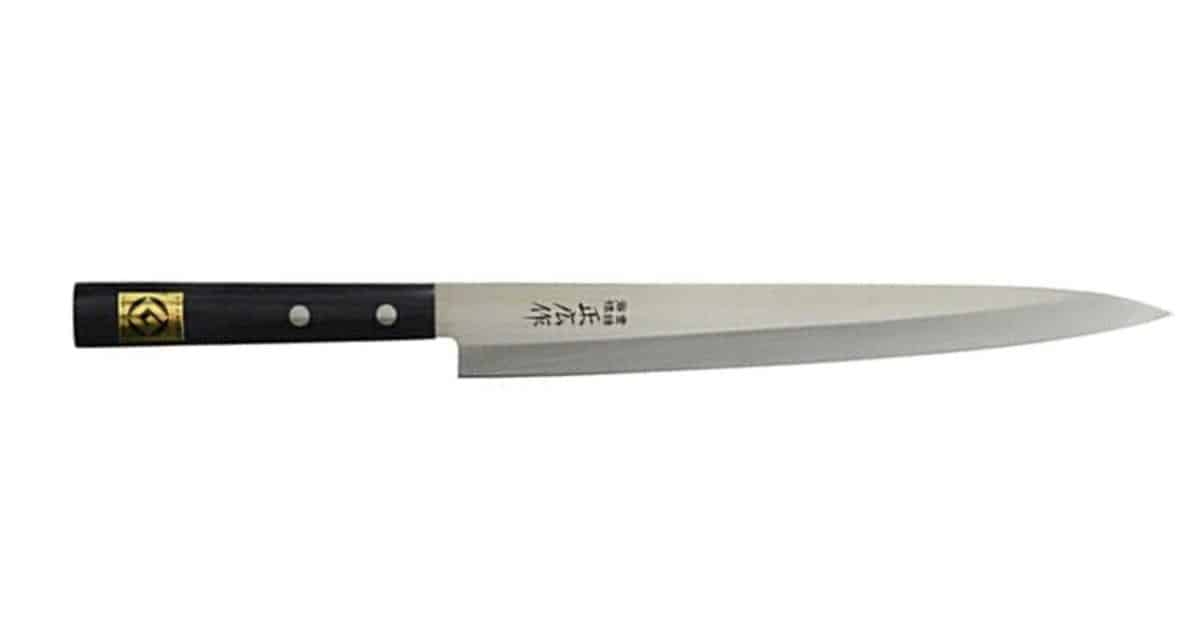
Yanagi
The Yanagi is a traditional Japanese knife designed specifically for slicing raw fish for sushi and sashimi. Its long, thin blade allows for a single, smooth stroke, resulting in clean, even cuts.
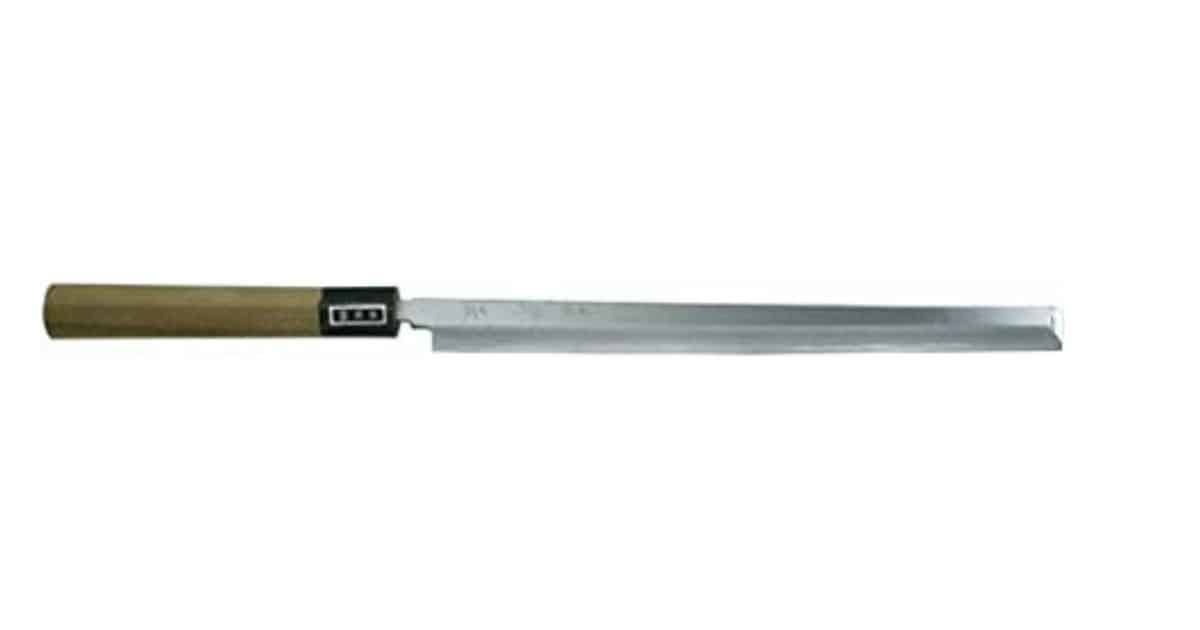
Takobiki
The Takobiki is similar to the Yanagi, but with a squared-off tip. It’s primarily used for slicing fish and octopus in the Tokyo area and is known for creating clean cuts with a reduced likelihood of damaging delicate ingredients.

Petty
The Petty knife is a small, versatile knife used for intricate tasks, such as peeling, trimming, and slicing small ingredients. It’s an excellent addition to any kitchen for detail-oriented work.

Honesuki
The Honesuki is a Japanese boning knife with a triangular blade, perfect for deboning poultry and other meats. Its sharp, pointed tip allows for precise cuts and easy maneuvering around bones.

Hankotsu
The Hankotsu is another boning knife, but with a thicker, sturdier blade. It’s commonly used for breaking down larger cuts of meat and butchering tasks.
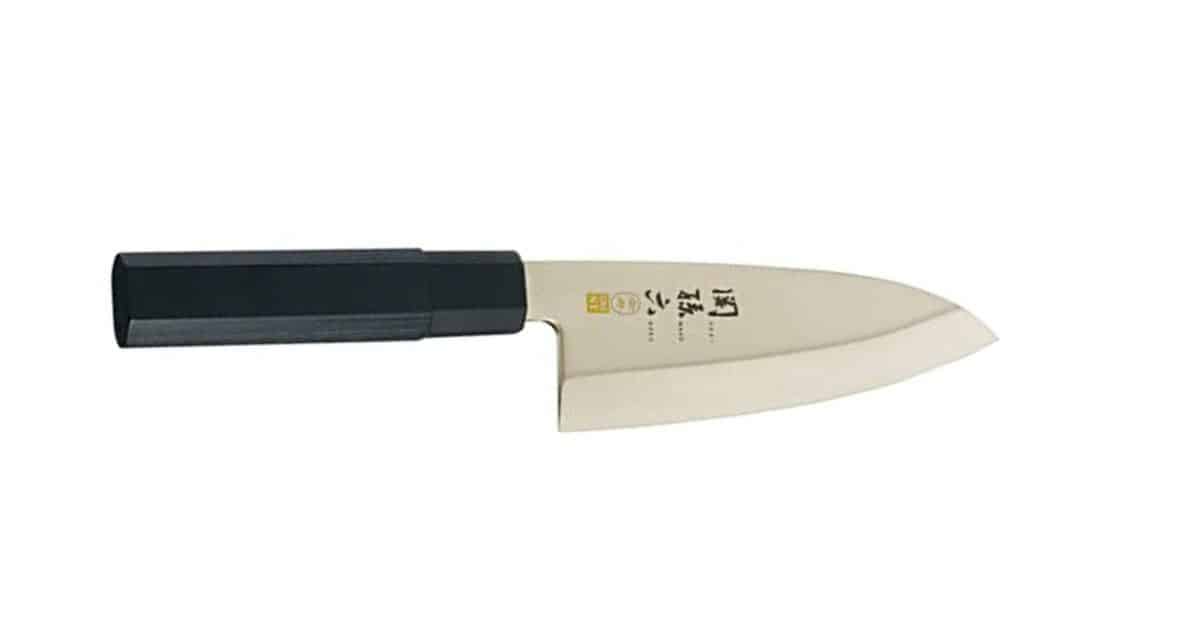
Deba
The Deba is a thick, heavy knife designed for filleting fish and breaking down poultry. Its weight and sturdy construction make it suitable for cutting through bones and cartilage.

Yo-deba
The Yo-deba is a Western-style Deba knife, featuring a double-bevel blade. It’s used for similar tasks as the traditional Deba, but with a slightly different cutting technique.
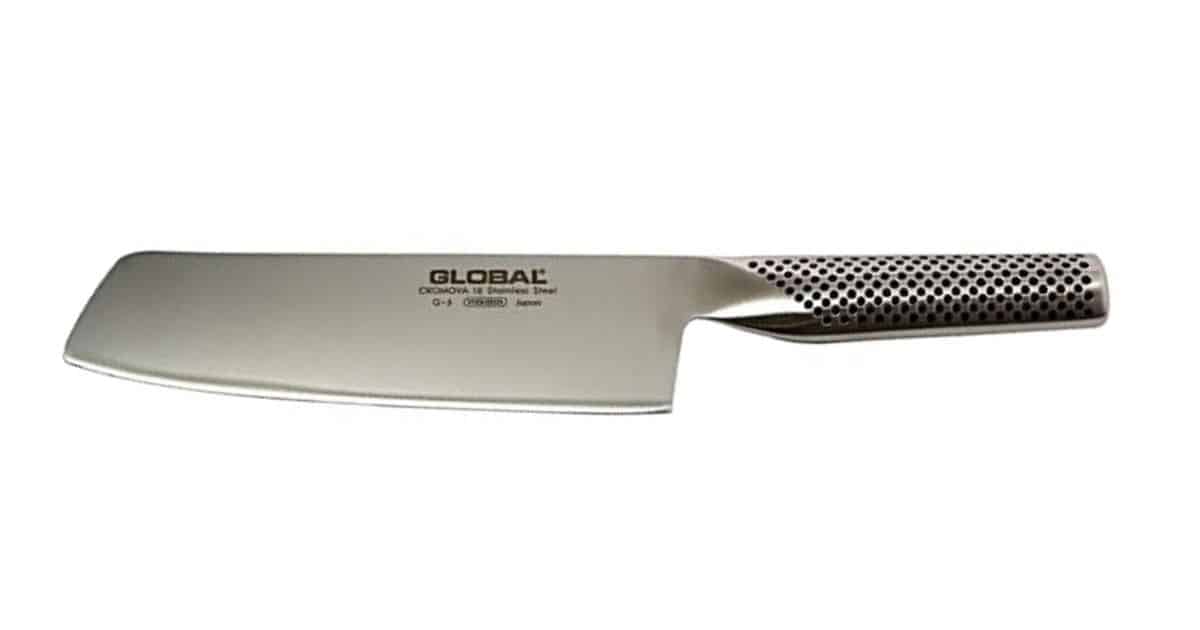
Nakiri
The Nakiri is a rectangular, thin-bladed knife designed for cutting vegetables. Its flat edge allows for smooth, even cuts and is perfect for tasks like julienning or chopping.
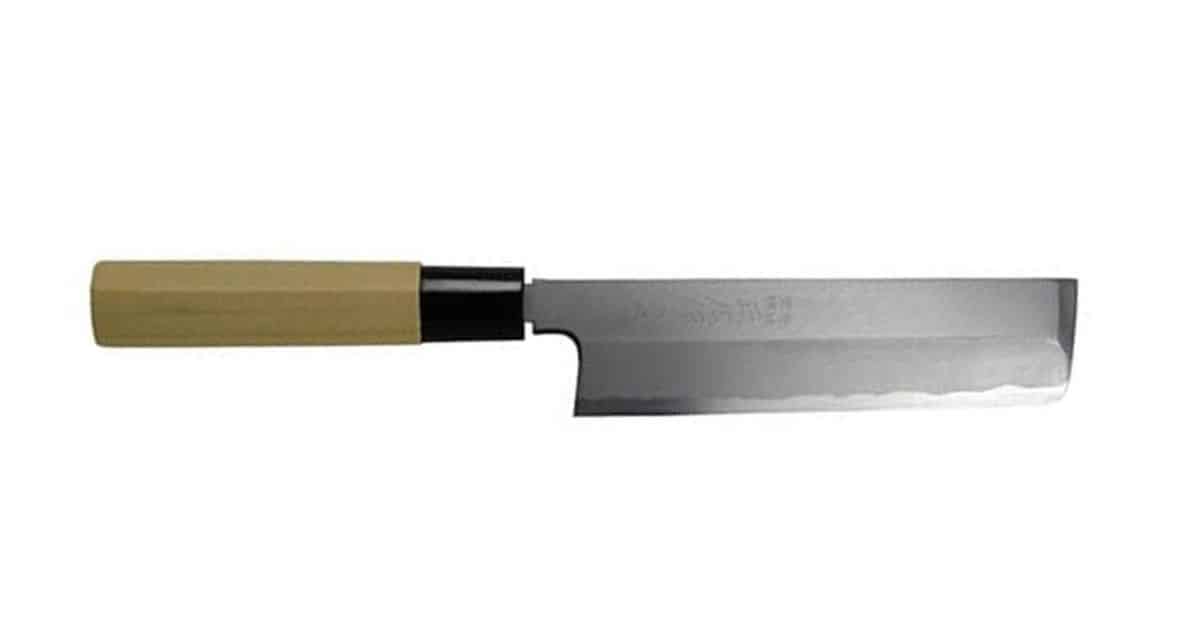
Usuba
The Usuba is a traditional Japanese vegetable knife with a single-bevel blade. It’s designed for precision work, such as creating paper-thin slices or intricate vegetable carvings.
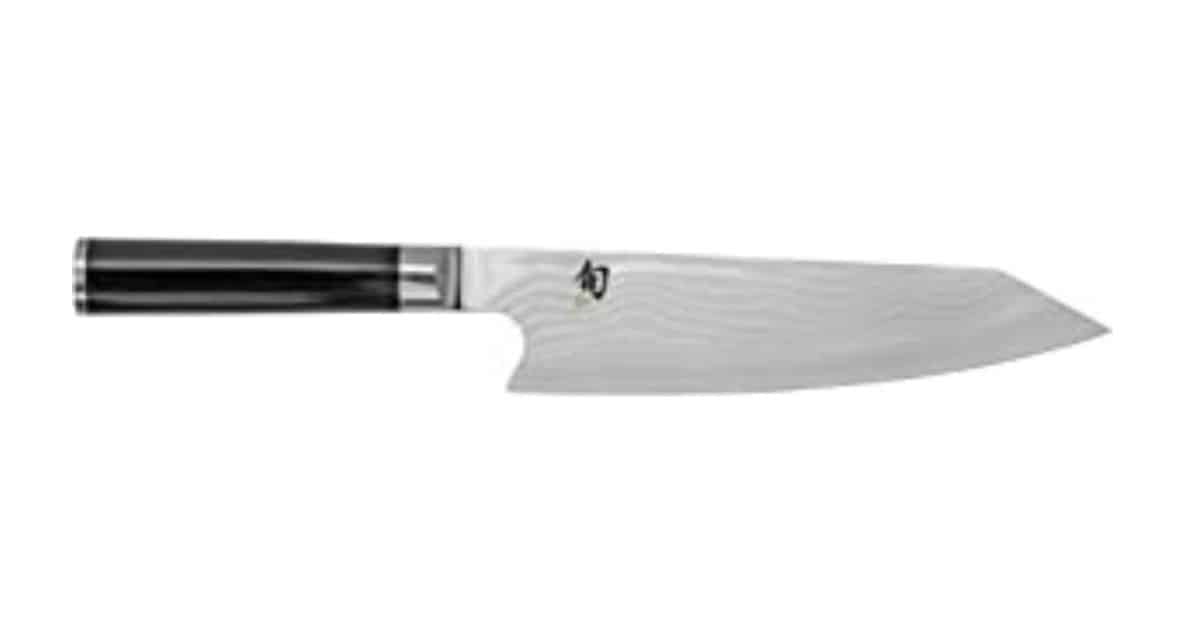
Kiritsuke
The Kiritsuke is a hybrid knife that combines features of the Gyutou and Usuba. It’s a versatile knife suitable for slicing, dicing, and chopping both meat and vegetables. The Kiritsuke is often considered a symbol of status in Japanese kitchens, typically reserved for experienced chefs.
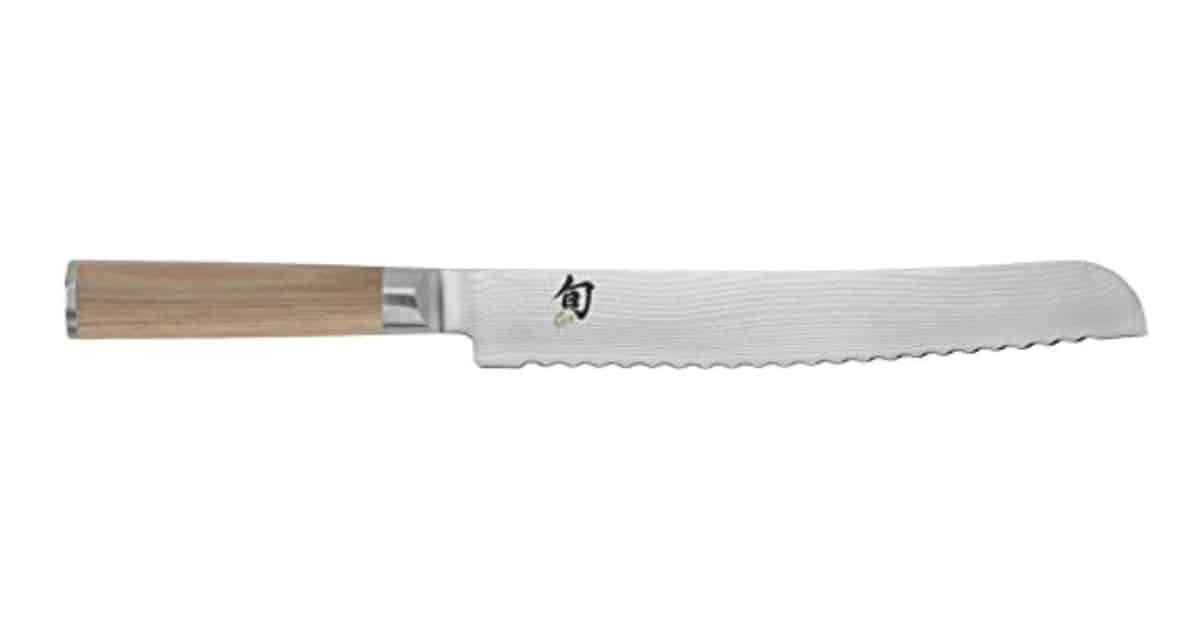
Pankiri
The Pankiri, or bread knife, features a serrated edge for cutting through crusty bread and pastries without crushing them. Its long, thin blade allows for clean, even slices, making it a must-have for any kitchen.
To make a long story longer… there are various types of Japanese knives, each designed for specific tasks and techniques. By understanding their unique features and uses, you can choose the right knives to enhance your culinary skills and make your time in the kitchen more enjoyable and efficient.
My Essential Japanese Knife Picks
These are the knives you will find in my kit and the first ones I go for.

Best Gyutou
For a top-quality Gyutou that offers excellent performance and versatility, the Kikuichi 9.5″ Hammered Finish Gyuto is a fantastic choice. Its combination of high-quality materials, superb craftsmanship, and razor-sharp edge make it an indispensable tool in any kitchen. I ABSOLUTELY LOVE this knife!!!

Best Honesuki
The Kikuichi Elite Carbon Steel Honesuki is a reliable and well-crafted boning knife that can make deboning poultry and other meats a breeze. Its sharp, pointed tip and agile blade ensure precise cuts, making it a must-have for those who regularly work with meat. Buying and breaking down whole chickens is fun with this guy.

Best Nakiri
The Global 8″ Vegetable Cleaver is an exceptional vegetable knife. Its thin, sharp blade allows for smooth, even cuts, making it ideal for slicing and chopping a variety of vegetables. I prefer this version which is part of the Global Professional series. It is the heavyweight and the upper portion of the blade is roughly twice as thick. For your home you may not need this one but if you are shopping for a knife that you will be using for hours on end then I would go this route.
Honorable Mentions

Miyabi Birchwood SG2 Chef’s Knife: A high-end Gyutou with a beautiful birchwood handle and a cryodur-hardened SG2 steel blade, offering exceptional performance and aesthetics.
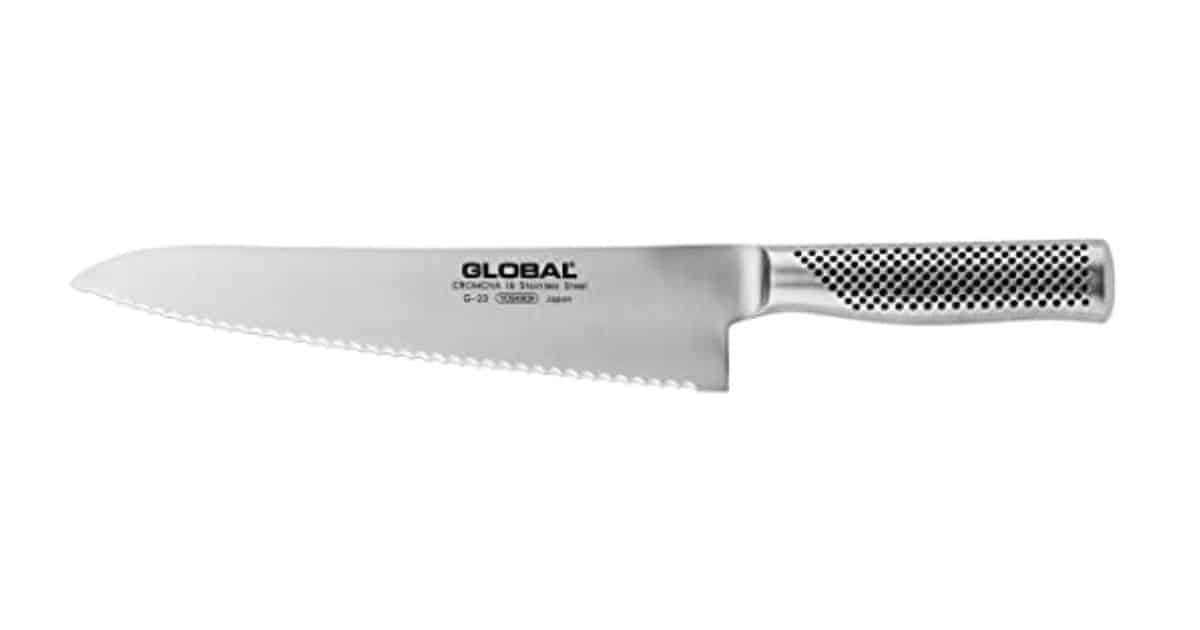
Global Knives Serrated Bread Knife: A durable and reliable Pankiri with a unique double-serrated edge, ensuring clean and precise cuts through crusty bread and pastries. I own this one as well and love it. It’s been in my kit for decades, seriously. It gets an honorable mention as a bread knife is not as vital as the 3 knives mentioned above.
By choosing these top-quality Japanese knives, you can equip your kitchen with essential tools that not only perform exceptionally well but also elevate your overall cooking experience. Whether you’re a professional chef or a home cook, investing in these knives can make your culinary journey more enjoyable and efficient.
Why Japanese Knife brands vs more mainstream brands?
I was classically trained in French Cuisine and used a western style knife exclusively during my training and early years. When I started using Japanese style knives I never turned back.
They just have more finesse and when you spend all day with a knife in your hand, the lighter weight really makes a difference. I’m done using western style knives now.
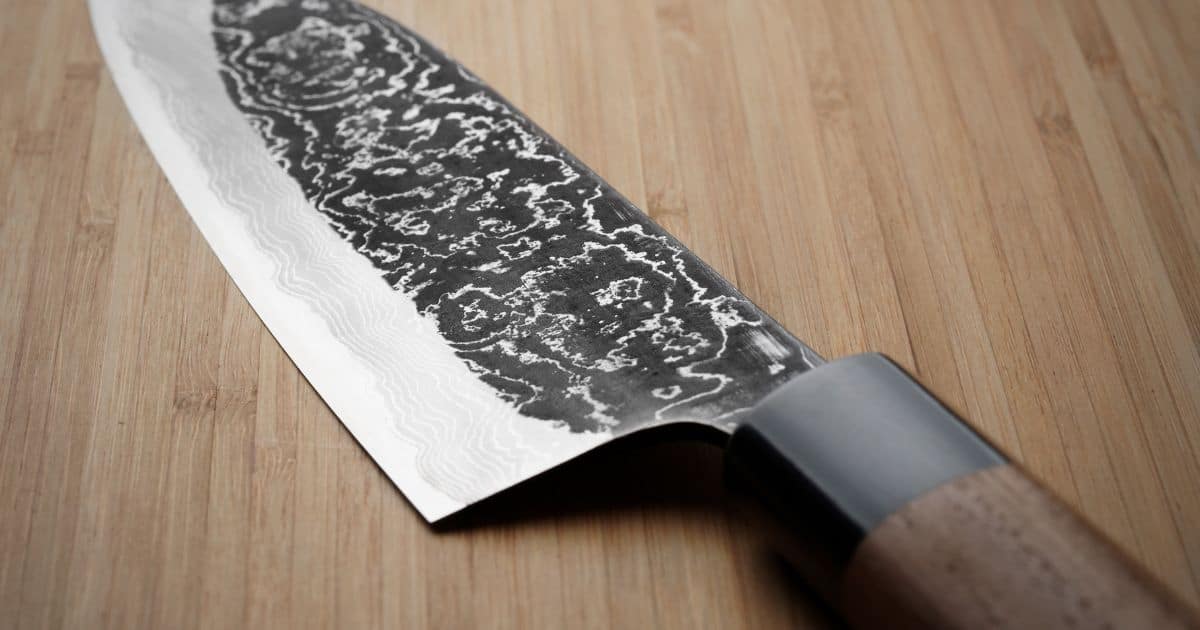
Caring For Your Japanese Chef Knife: Tips And Tricks
Taking proper care of your Japanese chef knife is essential to maintain its performance, sharpness, and longevity. Here are some tips and tricks to ensure your Japanese knives stay in top condition:
Cleaning: Always hand-wash your Japanese knives with warm, soapy water immediately after use. Avoid using the dishwasher, as the high heat and strong detergents can damage the knife’s edge and handle. Dry your knife thoroughly with a soft cloth to prevent rusting. If you go with a carbon steel knife than you will want to pay very close attention to this.
Storage: Store your knives in a safe and secure manner to protect their edges and prevent accidents. Use a knife block, magnetic strip, or in-drawer knife organizer. Avoid storing knives loosely in a drawer, as this can dull the edges and cause potential damage.
Sharpening: Japanese knives require regular sharpening to maintain their razor-sharp edge. Depending on the frequency of use, you may need to sharpen your knives every few months. Use a Japanese water stone or a ceramic honing rod specifically designed for Japanese knives. When sharpening, follow the manufacturer’s recommended angle and technique.
Honing: In between sharpening sessions, hone your knife using a ceramic honing rod to keep the edge aligned and maintain its sharpness. A few gentle strokes on the rod before each use should suffice.
Cutting Surface: Use a proper cutting board to protect your knife’s edge. Opt for a wooden or soft plastic cutting board, as they are gentle on your knife’s edge. Avoid using glass, marble, or other hard surfaces, as they can dull or damage the blade.
By following these care and maintenance tips, you can keep your Japanese chef knives in peak condition, ensuring they continue to provide exceptional performance and remain a cherished part of your kitchen toolkit for years to come.
If you ever have to deal with rust then try one of these rust erasers. Deal with rust ASAP as they will eat holes into your knife faster than you believe.
Key Takeaways
Japanese chef knives are renowned for their quality, sharpness, and craftsmanship, thanks to their rich history and use of high-quality materials.
Investing in Japanese kitchen knives can be worthwhile, as they offer excellent performance, durability, and longevity.
The most useful Japanese kitchen knife is the Gyutou, due to its versatility and ability to handle various cutting tasks.
Identifying a genuine Japanese chef knife involves recognizing its unique features, looking for trademarks from reputable manufacturers, and avoiding counterfeit products.
There are numerous types of Japanese knives, each designed for specific tasks and techniques, allowing you to select the perfect knife for your needs.
The Final Slice
Well, my fellow culinary enthusiasts, we’ve journeyed through the world of Japanese chef knives together, and I hope this guide has shed some light on these extraordinary kitchen tools. From their rich history to their unparalleled performance, it’s no wonder that Japanese knives have become a staple in many kitchens worldwide.
As an experienced chef with a passion for cooking, I wholeheartedly recommend investing in a few high-quality Japanese knives. They’ll not only elevate your cooking skills but also bring a sense of joy and satisfaction to your time spent in the kitchen. So go ahead, take the plunge, and treat yourself to some razor-sharp Japanese craftsmanship. Your culinary creations will thank you!
Frequently Asked Questions
Are kitchen knives legal in Japan?
Not sure who started this but Yes. In Japan, Chef knives are legal, as they are essential tools for cooking and food preparation. However, it is essential to follow local laws and regulations when purchasing, carrying, or transporting knives, especially when traveling to or from Japan.
What is a Japanese kitchen knife called?
A Japanese kitchen knife is called a “hocho” (包丁) in Japanese. There are various types of Japanese knives, each with a specific name and purpose, such as the Gyutou (chef’s knife), Honesuki (boning knife), or Nakiri (vegetable knife).
What is a Japanese chef called?
A Japanese chef is called an “itamae” (板前), which translates to “in front of the cutting board.” Itamae are highly skilled professionals who have undergone extensive training and apprenticeships to master the art of Japanese cuisine.
What is a teppanyaki chef?
A teppanyaki chef is a specialized Japanese chef who cooks food on a large, flat iron griddle called a “teppan.” Teppanyaki chefs are known for their theatrical cooking style, which often includes knife tricks, food tossing, and other entertaining techniques.
Who is the famous Japanese chef?
One famous Japanese chef is Jiro Ono, who is widely regarded as the world’s greatest sushi chef. Jiro Ono is the owner of the three-Michelin-starred restaurant Sukiyabashi Jiro in Tokyo, which has been frequented by numerous celebrities and world leaders. His dedication to the art of sushi-making was the subject of the acclaimed documentary “Jiro Dreams of Sushi.”

